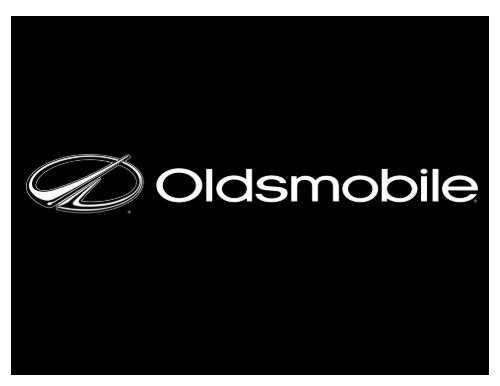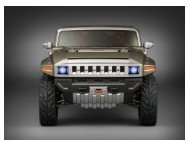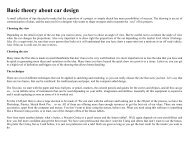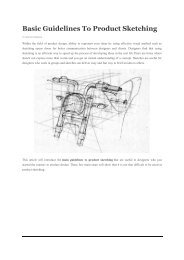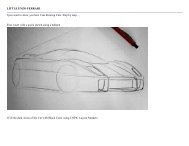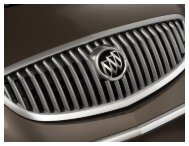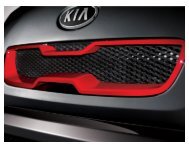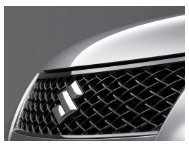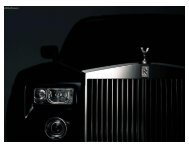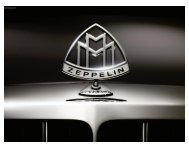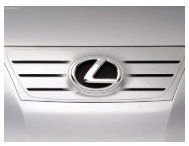Oldsmobile
Oldsmobile - ACDAC
Oldsmobile - ACDAC
- No tags were found...
Create successful ePaper yourself
Turn your PDF publications into a flip-book with our unique Google optimized e-Paper software.
<strong>Oldsmobile</strong><br />
<strong>Oldsmobile</strong><br />
Fate<br />
Dissolved<br />
Founded August 21, 1897<br />
Defunct April 29, 2004<br />
Headquarters<br />
Key people<br />
Industry<br />
Products<br />
Parent<br />
Lansing, Michigan, United States<br />
Ransom E. Olds, founder<br />
Automotive<br />
Luxury vehicles<br />
Mainstream vehicles, Muscle Cars<br />
General Motors<br />
<strong>Oldsmobile</strong> was a brand of automobile produced for most of its existence by General Motors. It was founded by Ransom E. Olds in 1897. In its 107-year history,<br />
it produced 35.2 million cars, including at least 14 million built at its Lansing, Michigan factory. When it was phased out, <strong>Oldsmobile</strong> was the oldest surviving<br />
American automobile marque, and one of the oldest in the world, after Daimler and Peugeot. It is GM's first brand to be phased out in the 21st century, since the<br />
phaseout of the Geo and Asuna (which was sold only in Canada) in the 1990s.
History<br />
Early history<br />
<strong>Oldsmobile</strong>s were first manufactured by the Olds Motor Works in Lansing, Michigan, a company founded by Ransom E. Olds in 1897. In 1901, the company<br />
produced 425 cars, making it the first high-volume automobile manufacturer of the day. Olds became the top selling car company in the United States for a few<br />
years. Ransom Olds left the company in financial difficulties and formed the REO Motor Car Company. The last Curved Dash Olds was made in 1907. General<br />
Motors purchased the company in 1908.<br />
The 1901 to 1904 Curved Dash was the first mass-produced car, made from the first<br />
automotive assembly line, an invention that is often miscredited to Henry Ford and the<br />
Ford Motor Company. After Olds sold the company in 1899, it was renamed Olds<br />
Motor Works and moved to a new plant in Detroit. By March 1901, the company had a<br />
whole line of models ready for mass production. Unfortunately, a mistake by a worker<br />
caused the factory to catch fire, and it burned to the ground, with all of the prototypes<br />
destroyed. The only car that survived the fire was a Curved Dash prototype, which was<br />
wheeled out of the factory by two workers while escaping the fire. A new factory was<br />
built, and production of the Curved Dash commenced.<br />
Officially, the cars were called "Olds automobiles," colloquially referred to as<br />
"<strong>Oldsmobile</strong>s." It was this moniker, as applied especially to the Curved Dash Olds, that<br />
was popularized in the lyrics and title of the 1905 hit song "In My Merry <strong>Oldsmobile</strong>."<br />
From then on, the company and its products were known as <strong>Oldsmobile</strong>. Some two<br />
decades later, it was apparently the reputation of the vehicles that spawned a revival of<br />
the song for another round of popularity, essentially "returning the favor."<br />
The 1910 Limited Touring was a high point for the company. Riding atop 42-inch<br />
wheels, and equipped with factory "white" tires, the Limited was the prestige model in<br />
<strong>Oldsmobile</strong>'s two model lineup. The Limited retailed for US$4,600, an amount greater<br />
than the purchase of a new, no-frills three bedroom house. Buyers received goatskin upholstery, a 60 hp (45 kW) 707 CID (11.6 L) straight-6 engine, Bosch<br />
Magneto starter, running boards and room for five. Options included a speedometer, clock, and a full glass windshield. A limousine version was priced at $5,800.<br />
While <strong>Oldsmobile</strong> only sold 725 Limiteds in its three years of production, the car is best remembered for winning a race against the famed 20th Century Limited<br />
train, an event immortalized in the painting "Setting the Pace" by William Hardner Foster.<br />
1930s<br />
In the 1930s through the 1990s, <strong>Oldsmobile</strong> used a two digit model designation. As originally implemented, the first digit signified the body size while the<br />
second represents the number of cylinders. Body sizes were 6, 7, 8, and 9, and 6- and 8-cylinder engines were offered. Thus, <strong>Oldsmobile</strong>s were named 66<br />
through 98.
In 1937, <strong>Oldsmobile</strong> was a pioneer in introducing a four-speed semi-automatic transmission called the "Automatic Safety Transmission", although this accessory<br />
was actually built by Buick, which would offer it in its own cars in 1938. This transmission featured a conventional clutch pedal, which the driver pressed before<br />
selecting either "low" or "high" range. In "low", the car shifted between first and second gears. In "high", the car shifted between first, third and fourth gears.<br />
1940s<br />
For the 1940 model, <strong>Oldsmobile</strong> was the first auto manufacturer to offer a fully automatic transmission, called the Hydramatic, which featured four forward<br />
speeds.<br />
The last pre-war <strong>Oldsmobile</strong> rolled off the assembly line on February 5, 1942. During World War II, <strong>Oldsmobile</strong> produced numerous kinds of material for the<br />
war effort, including large-caliber guns and shells.<br />
Production resumed on October 15, 1945 with a warmed-over 1942 model serving as the offering for 1946.<br />
<strong>Oldsmobile</strong> once again was a pioneer when, for the 1949 model, they introduced their Rocket engine, which used an overhead valve V8 design rather than the<br />
flathead "straight-8" design which prevailed at the time. This engine produced far more power than the engines that were popular during that era, and found favor<br />
with hot-rodders and stock car racers. The basic design, with few minor changes, endured until <strong>Oldsmobile</strong> redesigned their V8 engines in the mid-1960s.<br />
1950s<br />
<strong>Oldsmobile</strong> entered the 1950s following a divisional image campaign centered on its 'Rocket' engines and its cars' appearance followed suit. <strong>Oldsmobile</strong>'s Rocket<br />
V8 engine was the leader in performance, generally considered the fastest cars on the market and by the mid 1950s their styling was among the first to offer a<br />
wide, "open maw" grille, suggestive of jet propulsion. <strong>Oldsmobile</strong> adopted a ringed-globe emblem to stress what marketers felt was its universal appeal.<br />
Throughout the 1950s, the make used twin jet pod-styled taillights as a nod to its "Rocket" theme. <strong>Oldsmobile</strong> was among the first of GM's divisions to receive a<br />
true hardtop in 1949, and it was also the among the first divisions (along with Buick and Cadillac) to receive a wraparound windshield, a trend that eventually all<br />
American makes would share at sometime between 1953 and 1964.<br />
In the 1950s the nomenclature changed again, and trim levels also received names that were then mated with the model numbers. This resulted in the <strong>Oldsmobile</strong><br />
88 emerging as base Dynamic 88 and the highline Super 88. Other full-size model names included the "Holiday" used on hardtops, and "Fiesta" used on its<br />
station wagons. When the 88 was retired in 1999 (with a Fiftieth Anniversary Edition), its length of service was the longest model name used on American cars<br />
after the Chrysler New Yorker.<br />
GM styling as a whole lost its frontrunner status in 1957 when Chrysler introduced Virgil Exner's "Forward Look" designs. When compared side to side,<br />
<strong>Oldsmobile</strong> looked dated next to its price-point competitor DeSoto. Compounding the problem for <strong>Oldsmobile</strong> and Buick was a styling mistake which GM called<br />
the "Strato Roof". Both makes had models which contained the heavily framed rear window, but Detroit had been working with large curved backlights for<br />
almost a decade. Consumers disliked the roof and its blind spots, forcing GM to rush a redesign into production on some of its models.
<strong>Oldsmobile</strong>'s only off year in the 1950s was 1958. The nation was beginning to feel the results of its first significant post war recession, and US automobile sales<br />
were down for the model year. <strong>Oldsmobile</strong>, Buick and Cadillac received a heavy handed makeover of the 1957 GM designs. The <strong>Oldsmobile</strong> that emerged in<br />
1958 bore little resemblance to the design of its forerunners; instead the car emerged as a large, over-decorated "chromemobile".<br />
Up front, all 1958 <strong>Oldsmobile</strong>s received one of GM's heavily styled front fascias and quad-headlights. Streaking back from the edge of the headlights was a<br />
broad belt consisting of two strips of chrome on regular 88s, three strips on Super 88s, and three strips (top and bottom thin, inside thick) on 98s that ended in a<br />
point at mid-body. The bottom of the rear fender featured a thick stamping of a half tube that pointed forward, atop which was a chrome assembly of four<br />
horizontal chrome speed-lines that terminated into a vertical bar. The tail of the car featured massive vertical chrome taillight housings. Two chrome stars were<br />
fitted to the trunklid.<br />
Ford styling consultant Alex Tremulis (designer of the 1948 Tucker Sedan) mocked the 1958 <strong>Oldsmobile</strong> by drawing cartoons of the car, and placing musical<br />
notes in the rear trim assembly. Another Detroit stylist employed by Ford bought a used 1958 <strong>Oldsmobile</strong> in the early 1960s, driving it daily to work. He<br />
detached and rearranged the OLDSMOBILE lettering above the grille to spell out SLOBMODEL as a reminder to himself and co-workers of what "bad" auto<br />
design meant to their business.<br />
1960s<br />
In the 1960s <strong>Oldsmobile</strong>'s position between Pontiac and Buick in GM's hierarchy began to dissolve. Notable achievements included the introduction of the first<br />
turbocharged engine in 1962 (the Turbo Jetfire), the first modern front-wheel drive car produced in the United States (the 1966 Toronado), the Vista Cruiser<br />
station wagon (noted for its roof glass), and the upscale 442 muscle car. Olds briefly used the names Jetstar 88 (1964-1966) and Delmont 88 (1967-1968) on its<br />
least expensive full size models in the 1960s.<br />
1970s-1980s<br />
<strong>Oldsmobile</strong> sales soared in the 1970s and 1980s (for an all-time high of 1,066,122 in 1985) based on popular designs, positive reviews from critics and the<br />
perceived quality and reliability of the Rocket V8 engine, with the Cutlass series becoming North America's top selling car by 1976. By this time, Olds had<br />
displaced Pontiac and Plymouth as the #3 best selling brand in the U.S. behind Chevrolet and Ford. In the early 1980s, model-year production topped one million<br />
units on several occasions, something only Chevrolet and Ford had achieved.<br />
The soaring popularity of <strong>Oldsmobile</strong> vehicles resulted in a major issue in the late 1970s. At that time, each General Motors division produced its own V8<br />
engines, and in 1977, <strong>Oldsmobile</strong>, Chevrolet, Pontiac and Buick each produced a unique 350 cubic inch displacement V8.<br />
It was during the 1977 model year that demand exceeded production capacity for the <strong>Oldsmobile</strong> V8, and as a result <strong>Oldsmobile</strong> quietly began equipping some<br />
full size Delta 88 models and the very popular Cutlass/Cutlass Supreme with the Chevrolet 350 engine instead. Although it was widely debated whether there<br />
was a difference in quality or performance between the two engines, there was no question that the engines were different from one another. Many customers<br />
were loyal <strong>Oldsmobile</strong> buyers who specifically wanted the Rocket V8, and did not discover that their vehicle had the Chevrolet engine until they performed<br />
maintenance and discovered that purchased parts did not fit. This became a public relations nightmare for GM.
Following this debacle, disclaimers stating that "<strong>Oldsmobile</strong>s are equipped with engines produced by various GM divisions" were tacked on to advertisements<br />
and sales literature; all other GM divisions followed suit. In addition, GM quickly stopped associating engines with particular divisions, and to this day all GM<br />
engines are produced by "GM Powertrain" (GMPT) and are called GM "Corporate" engines instead of GM "Division" engines. Although it was the popularity of<br />
the <strong>Oldsmobile</strong> division vehicles that prompted this change, declining sales of V8 engines would have made this change inevitable as all but the Chevrolet (and,<br />
later, Cadillac's Northstar) versions were eventually dropped.<br />
1990s<br />
1980s, things changed quickly for <strong>Oldsmobile</strong>, and by 1990 the brand had lost its place in the market, squeezed between the resurgent Pontiac and Buick<br />
divisions. <strong>Oldsmobile</strong>'s signature cars gave way to rebadged models of other GM cars, and GM shifted the performance mantle to Chevrolet and Pontiac. GM<br />
continued to use <strong>Oldsmobile</strong> sporadically to showcase futuristic designs and as a "guinea pig" for testing new technology, with <strong>Oldsmobile</strong> offering the<br />
Toronado Trofeo, which included a visual instrument system with a calendar, datebook, and climate controls. For 1995, <strong>Oldsmobile</strong> introduced the Aurora,<br />
which would be the inspiration for the design of its cars from the mid-1990s onward. The introduction of the Aurora marked as GM's catalyst to reposition<br />
<strong>Oldsmobile</strong> as an upscale import fighter. Accordingly, <strong>Oldsmobile</strong> received a new logo based on the familiar "rocket" theme. Nearly all the existing model<br />
names were gradually phased out: the Cutlass Calais in 1991, the Toronado and Custom Cruiser in 1992, the Ninety-Eight and Ciera (formerly Cutlass Ciera) in<br />
1996, Cutlass Supreme in 1997, and finally the Eighty-Eight and Cutlass (which had only been around since '97) in 1999. They were replaced with newer, more<br />
modern models with designs inspired by the Aurora.<br />
2000s<br />
In spite of <strong>Oldsmobile</strong>'s critical successes since the mid-1990s, a reported shortfall in sales and overall profitability prompted General Motors to announce in<br />
December 2000 their plans to phase out the <strong>Oldsmobile</strong> brand. The announcement took place just two days after <strong>Oldsmobile</strong> unveiled what would be its last new<br />
model ever, the Bravada SUV - which became, somewhat ironically, another critical hit for the division. Although the <strong>Oldsmobile</strong> Bravada was a rebadged<br />
Chevrolet Trailblazer or GMC Envoy, it was the only model in this line up to offer AWD (all wheel drive) system.<br />
The phaseout was conducted on the following schedule:<br />
• Mid-2001: The 2002 Bravada, the company's last new model, hits <strong>Oldsmobile</strong> showrooms<br />
• June 2002: Production ends for Intrigue and the Aurora V6 sedans<br />
• May 2003: Aurora V8 sedan production ends<br />
• January 2004: Bravada SUV production ends<br />
• March 2004: Silhouette minivan production ends<br />
• April 2004: Alero compact car production ends<br />
The final 500 Aleros, Auroras, Bravadas, Silhouettes and Intrigues produced received special <strong>Oldsmobile</strong> heritage emblems and markings which signified 'Final<br />
500'. All featured a unique Dark Cherry Metallic paint scheme. Auroras and Intrigues would be accompanied by special Final 500 literature.<br />
The final production day for <strong>Oldsmobile</strong> was April 29, 2004. The division's last car built was an Alero GLS 4-door sedan, which was signed by all of the Olds<br />
assembly line workers. It is on display at the R.E. Olds Transportation Museum located in Lansing, Michigan.
<strong>Oldsmobile</strong> models<br />
• <strong>Oldsmobile</strong> Curved Dash (1901-1907)<br />
• <strong>Oldsmobile</strong> Limited Touring<br />
• <strong>Oldsmobile</strong> 40<br />
• <strong>Oldsmobile</strong> 53<br />
• <strong>Oldsmobile</strong> 66 (1940s)<br />
• <strong>Oldsmobile</strong> 88 (1949-1999)<br />
• <strong>Oldsmobile</strong> 98 (1941-1996)<br />
• <strong>Oldsmobile</strong> Series 60 (1939-1948)<br />
• <strong>Oldsmobile</strong> Series 70 (1946-1950)<br />
• <strong>Oldsmobile</strong> Series 90 (1941-1996)<br />
• <strong>Oldsmobile</strong> 442 (1968-1971)<br />
• <strong>Oldsmobile</strong> Cutlass (1964-1999)<br />
• <strong>Oldsmobile</strong> Cutlass Supreme (1970-1997)<br />
• <strong>Oldsmobile</strong> Cutlass Salon<br />
• <strong>Oldsmobile</strong> Cutlass Calais (1985-1991)<br />
• <strong>Oldsmobile</strong> Cutlass Ciera (1982-1996)<br />
• <strong>Oldsmobile</strong> Custom Cruiser (1971-1992)<br />
• <strong>Oldsmobile</strong> Vista Cruiser (1964-1977)<br />
• <strong>Oldsmobile</strong> F-85 (1961-1963)<br />
• <strong>Oldsmobile</strong> Toronado (1966-1992)<br />
• <strong>Oldsmobile</strong> Starfire (1975-1980)<br />
• <strong>Oldsmobile</strong> Firenza (1982-1988)<br />
• <strong>Oldsmobile</strong> Aerotech (1987-1992)<br />
• <strong>Oldsmobile</strong> Achieva (1992-1998)<br />
• <strong>Oldsmobile</strong> Alero (1999-2004)<br />
• <strong>Oldsmobile</strong> Aurora (1995-2003)<br />
• <strong>Oldsmobile</strong> Bravada (1991-2004)<br />
• <strong>Oldsmobile</strong> Intrigue (1998-2002)<br />
• <strong>Oldsmobile</strong> Silhouette (1990-2004)


